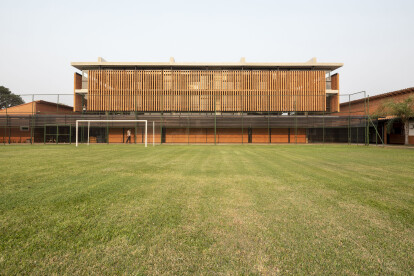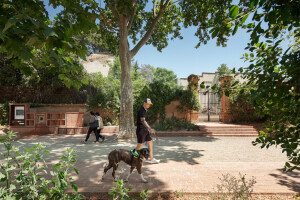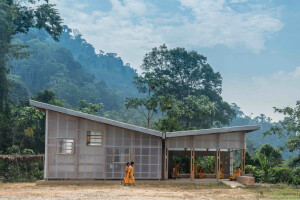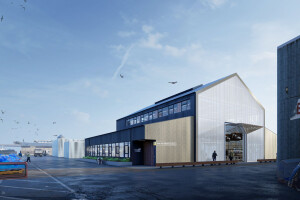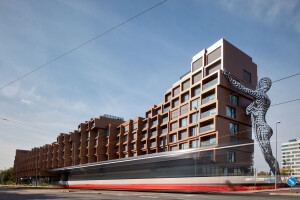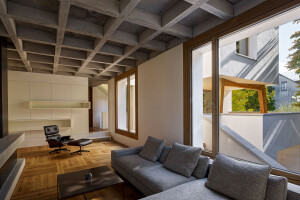“I got an order from the school board that said ‘We have a great idea. We should not put windows in the school because children need wall space for their paintings, and also windows can distract from the teacher’. Now, what teacher deserves that much attention? After all, the birds outside, the person scurrying for shelter in the rain, the leaves falling from the trees, the clouds passing by, the sun penetrating: these are all great things. They are lessons in themselves.” – Louis Kahn
In 2001, The Guardian published a survey that invited children to suggest the school of their dreams. The result was gathered as the “Children’s Manifesto”, published in a book called “The School I’d Like. Children and Young People’s Reflections on the Education for the 21st Century”. Children and young people between 4 and 18 years old in 2001 declared that the following characteristics were important for their formation within the academic environment:
-An active school, with a direct relationship with nature, to learn from and live with it
-A school with lots of natural light, clear spaces and clear walls.
-A place where you learn through experience, experiments and exploration.
-A school without walls, to remain in contact with the outside.
Ten years later, in a similar exercise, The Guardian re-launches the poll nationally. The objective was to analyze any changes in the desires of the ideal school. In this data collection, it became clear that the ideal of a school had changed very little. Despite suggestions to incorporate digital platforms into the educational process, what remained consistent was the unanimous desire to maintain first-hand “real learning” opportunities, which cannot be developed solely within a classroom. The incorporation of board games, such as chess, learning from the natural environment, and even the creation of greenhouses to grow vegetables and fruits, were the new aspirations.
David and Mary Medd were a couple of English architects who revolutionized school design. The Medds threatened the design of the “over-protection” of children in schools in their 1971 article “Designing Primary Schools” arguing that “education needs to resist pressure from interior space engineers, that all they do is to offer buildings with pure protection and no connection. The sound of the fan, the flickering of the fluorescent do not have any compensation with respect to the sound of the wind, the flickering of natural light and the shade that nature provides".
All these concepts are included within the new pedagogical renovation. Continuing with this philosophy, we decided to propose a project that meets all the criteria that the school of the future needs.
Instead of creating a “monoblock”, heavy, aggressive and closed, which in a certain way represents the old and obsolete model of education, the project proposes two longitudinal, permeable and transparent bars, which are adapted to the new educational criteria. Open and permeable, the proposal connects and relates the existing elements that constitute the functional and spatial structures of the school.
There are certain important aspects in the architecture of the school that were taken as guiding principles for the proposal. The patios and gardens that make up the pavilions define the criteria for the implantation of the new building, which, respecting this separation, links the existing patios, reinforcing not only the visual and spatial connection, but also builds a wind tunnel for the correct natural ventilation of the intermediate spaces.
All of the classes allow spatial continuity of the courtyards located on both sides. This allows natural light and shadows to penetrate all of the classrooms. Towards the corridors, the visuals are obstructed by interspersed walls, which protect the classrooms from sounds and provide a certain privacy, but allow cross ventilation and natural light.
The structure is resolved by an orthogonal grid of reinforced concrete beams and columns. Each block contains 4 rows of two pillars, which correspond to the axes of the attached block. On the last level, the beams are inverted and braced between both pavilions, thus structuring the ramp that hangs from these transverse beams.
The brise-soleils respond not only to the climatic condition, but also dialogue with the immediate surroundings of the building, taking as reference old brick filters located along the circulation of the school. These slender elements create a veil that protects the interior in all orientations: to the east, west and north due to the inclination of the sun, and to the south due to the rains and to give greater privacy to the interior. The structure of the parasols, angles and metal pipes, are anchored to the external perimeter beams. The bricks, structured by internal rods, which serve as guides, rest on the angles, which in turn transmit the loads to the reinforced concrete structure.
All the materials used are those that identify, not only the image of the school, but also contemporary Paraguayan architecture. Bricks, concrete, wood and metal are noble, durable and accessible materials.
The architecture of the building expresses its meaning and embodies the values of openness, inclusion, permeability and accessibility. Structural and functional logic, material honesty and spatial quality are the answers offered by this new building.


